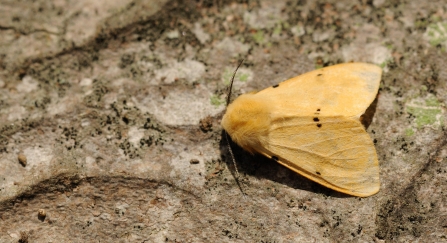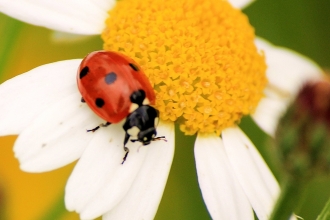This week’s Wild Cornwall article is from the latest issue (Spring - Issue 141) which is due to be sent to members in the coming weeks. Kate Bradbury, wildlife-friendly gardener and the author of Wildlife Gardening for Everyone and Everything in association with The Wildlife Trusts, suggests nine ways to support all the stages of butterfly and moth life cycles.

Amy Lewis
Butterflies and moths have suffered huge declines in recent years. This is largely due to habitat loss, but agricultural pesticides and climate change have made life even more challenging for many species. Happily, there’s plenty we can do to help them on our own patch, no matter its size. The UK’s gardens take up more space than all of its nature reserves put together, so if we all gardened with butterflies and moths in mind, we could help slow, or even reverse, some of these declines.
We tend to feel more fondly about butterflies than moths, which can be viewed with ambivalence as they fly at night and a few species eat our clothes. But not all moths fly at night – the six-spot burnet and hummingbird hawkmoth can be spotted during the day – and many of them are just as beautiful as their day-flying cousins. Only about five of our 2,500 species eat clothes and moth caterpillars are an important source of food for nesting birds, hedgehogs and amphibians. So by gardening for moths, we can also help other wildlife.
Brimstone butterfly from last summer © Claire Lewis
As adults, most butterflies and moths drink nectar, but their caterpillars eat leaves and other plant material. To make them truly welcome in our gardens, we need to support all stages of their life cycles by growing nectar-rich flowers for the adults and foodplants for the caterpillars. We also need to accommodate the stage in between caterpillar and adult – the chrysalis (butterfly) or cocoon (moth). Many species spend the winter in this vulnerable stage so leave a little patch to grow a bit wild for them. Making space for butterflies and moths to feed, breed and hibernate in our gardens will make all the difference to these struggling pollinators.
9 top tips
1. Grow nectar-rich flowers
Make sure something is in flower from March through to November, starting with primroses, bluebells and forget-me-not in spring, then alliums, lavender and scabious in late summer, and late-flowering Verbena bonariensis, sedums and rudbeckias in autumn.
2. Plant some climbers
Bare fences and walls are a wasted opportunity to help butterflies. Cover them with plants and provide nectar-rich flowers and shelter for species, such as brimstones, to hibernate. If you grow hops, comma butterflies may lay their eggs on its leaves.
3. Add a window box
If you don’t have a garden or your space is small, grow nectar-rich flowers in pots, window boxes or hanging baskets. Choose low-growing primrose and lavender for pots, and nasturtiums for baskets.
4. Provide caterpillar foodplants
Butterflies need the right plants in order to lay eggs in your garden. Grow cuckooflower for caterpillars of the orange-tip butterfly, nettles for peacocks, small tortoiseshells and red admirals, and holly and ivy for the holly blue.
5. Avoid cutting down plants in autumn
Some butterflies, such as orange-tips, overwinter as chrysalises, which makes them vulnerable to tidying. Leave plants intact over winter and clear them in spring instead. Always check for chrysalises just in case!
6. Plant a mixed native hedge
If you have space, plant a native tree or two. Many moths lay their eggs on the leaves of willow, dog rose, birch and hawthorn. Grow a climber, such as honeysuckle, through the hedge to make it even more moth-friendly.
7. Grow night-scented plants
Plant groups of common jasmine, evening primrose, honeysuckle and night-scented stock together, so that moths can find them more easily.
8. Leave some weeds
Many moths lay their eggs on the leaves of nettles, brambles, dock and dandelions. Even leaving weeds at the back of borders, where you can’t see them, will make a difference.
9. Don’t be too tidy
While some moths breed in long grass, many caterpillars and pupae spend winter hibernating in grass or among leaf litter and other plant debris. Leave things where they are in autumn and winter, and tidy up in spring instead.


